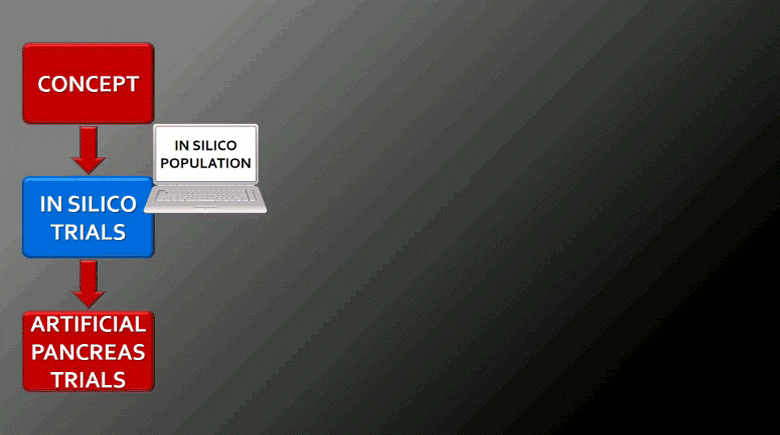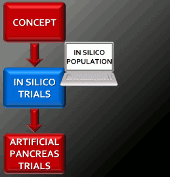
Roberto Visentin, Chiara Dalla Man, and Claudio Cobelli, University of Padova, Italy
The UVA/Padova Type 1 Diabetes (T1DM) Simulator has been shown to be representative of a T1DM population observed in a clinical trial, but has not yet been identified on T1DM data. Moreover, the current version of the simulator is “single-meal” while making it “single-day centric”, i.e. by describing intra-day variability, would be a step forward to create more realistic in silico scenarios. Here we propose a Bayesian method for the identification of the model from plasma glucose and insulin concentrations only, by exploiting the prior model parameter distribution.
The database consists of 47 T1DM subjects, who received dinner, breakfast and lunch (respectively 80, 50 and 60 CHO grams) in three 23-hour occasions (1 open- and 2 closed-loop). The model is identified using the Bayesian Maximum a Posteriori technique, where the prior parameter distribution is that of the simulator. Diurnal variability of glucose absorption and insulin sensitivity is allowed.
The model well describes glucose traces and the posterior parameter distribution is similar to that included in the simulator. Absorption parameters at breakfast are significantly different from those at lunch and dinner, reflecting more rapid dynamics of glucose absorption. Insulin sensitivity varies in each individual but without a specific pattern.
The incorporation of glucose absorption and insulin sensitivity diurnal variability into the simulator makes it more realistic.
The proposed method, applied to the increasing number of long-term artificial pancreas studies, will allow to describe week/month variability, thus further refining the simulator.
KEYWORDS: Artificial pancreas, circadian variability, closed-loop control, compartmental modeling, in silico

